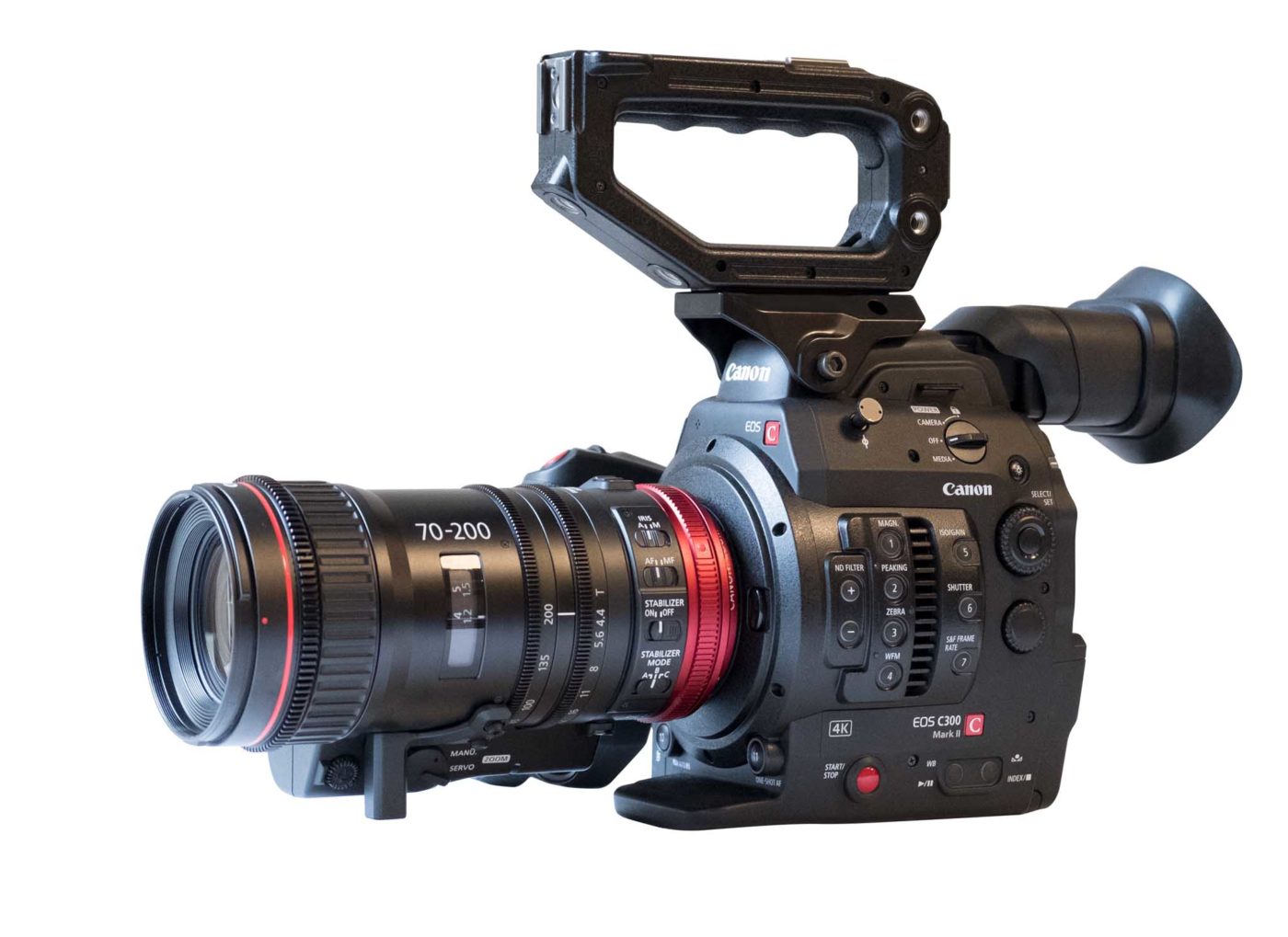
Download the complete, lavishly illustrated FDTimes 9-page PDF article.
Exactly a year ago at NAB 2016, Canon introduced a new cine lens for Super 35. The Compact Servo 18-80 mm T4.4 (CN-E18-80mm T4.4 L IS KAS) EF-mount zoom was a compelling hybrid that combined the best attributes of cine and still photography. Three different lines of Canon lenses intersect in the design: more than 60 L-Series EF lenses for professional still photography, Cinema Zooms with manual focus/iris/zoom barrels (15.5-47, 30-105, 14.5-60, 30-300 mm), and Cine-Servo (17-120, 50-1000 mm) zooms.
Now, a year later at NAB 2017, Canon’s Compact Servo family gets a new sibling. The Canon 70-200 mm T4.4 (CN-E70-200mm T4.4 L IS KAS S) EF-mount zoom covers longer, essential focal lengths. And so, with just two lightweight, compact, affordable, high performance lenses, you can cover any angle from wide 18 mm to long 200 mm. An accessory 2x extender gets you to 400 mm.
There are many virtues that we’ll get to in a minute. But the most exciting function is one rarely seen in cine lenses: really good optical IS — image stabilization. If you’ve ever used Canon’s superb IS binoculars while bouncing around in a boat, the benefits are clear. Helicopter and camera car shots become gracefully smooth. On a windy day, shooting from a remote head is…ahem…a breeze. When there’s no time to lay track and panic mode prevails, dolly shots on bumpy floors appear steady. Handheld shots can be done smoothly at longer focal lengths. Surely more stabilized cine lenses will follow.
In the still photo world, image stabilization is often quantified by how much exposure you might have gained. In other words, with IS enabled, the equivalent of a 3-stop gain means the image now looks steady at 1/30 second where it would have otherwise required a 1/250 second exposure to be sharp. For cinematography, since we’re usually shooting at the equivalent of 1/48 second, Canon’s new Compact Servo zooms might be quantified by how much tighter you can zoom in with IS enabled and still remain rock steady.
And that’s the big deal with the new 70-200 mm zoom. Close-ups and telephoto shots that would otherwise have looked annoyingly shaky are now wonderfully stable. There’s a switch with three settings. A is for standard handheld. B engages a more vigorous correction for shake and is good when handheld from moving vehicles. C is for tripod shooting where you don’t want the image to drift when your pan comes to a stop.
Like the 18-80, Canon’s new 70-200 comes with EF mount only. Auto Focus and Auto Iris work nicely on Canon Cinema EOS C700, C300 Mark II and C100 Mark II cameras. A small housing on the right side contains lens motors, controls, connectors and a small zoom rocker switch. The motors can be switched on for auto or remote operation or switched off for manual control. This module remains on the lens. You don’t have to remove it, recalibrate or worry about gears not meshing. An optional servo handgrip can be used interchangeably with both Compact Servo zoom lenses. It attaches to the control module with one screw using an industry standard rosette and can also be used with a handgrip extension arm.
It’s no secret that a lot of Canon Cinema EOS users are working with EF mount still lenses because of the variety, availability and affordability. The new Canon Compact Servo lenses have all that—as well as geared lens barrels, a 130° focus barrel, smooth parfocal manual/auto zoom, manual/auto iris, and image stabilization. Price for the 18-80 is now around $5,225. The ZSG-C10 accessory handgrip is about $474.
www.usa.canon.com NAB Booth C4325








